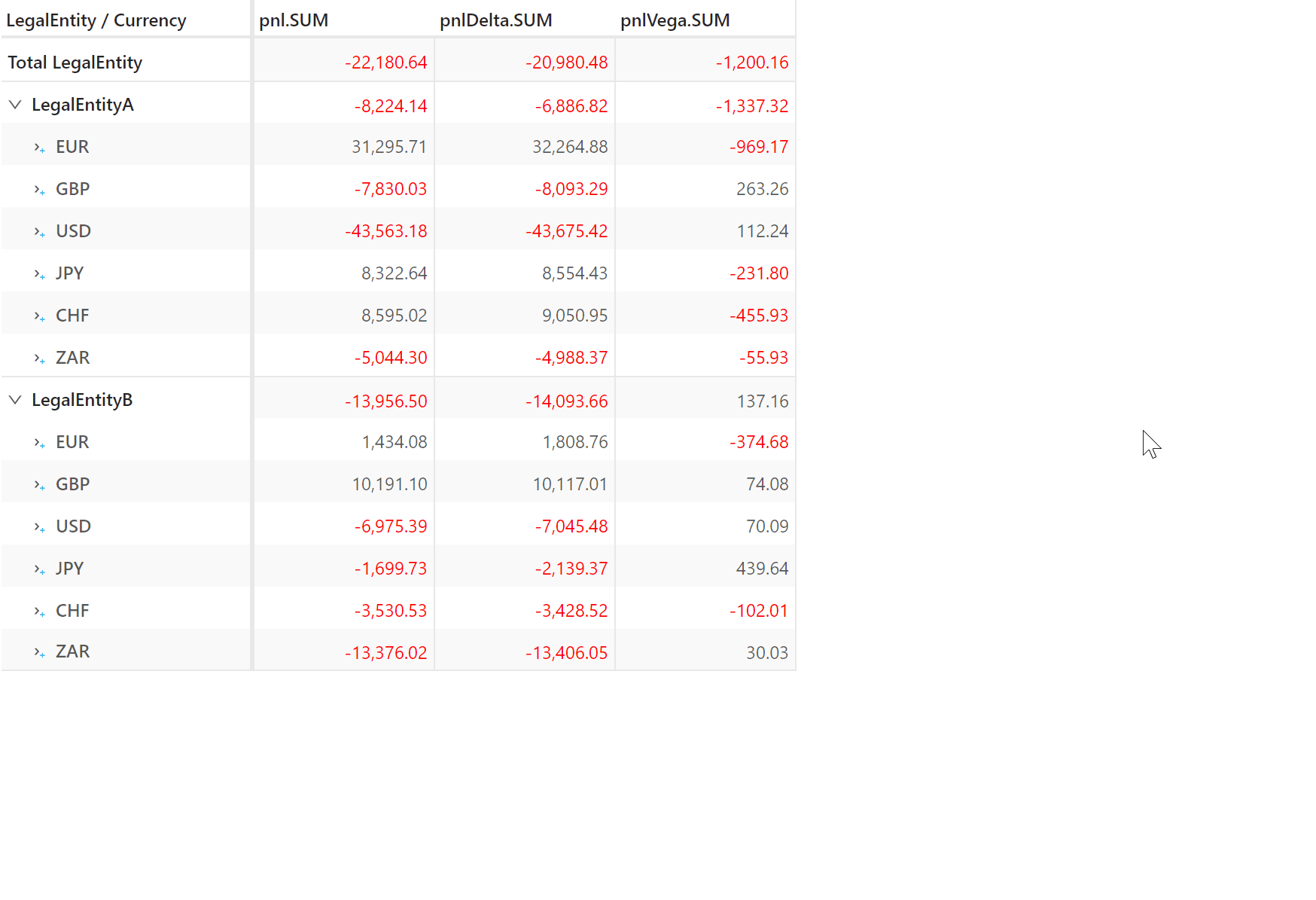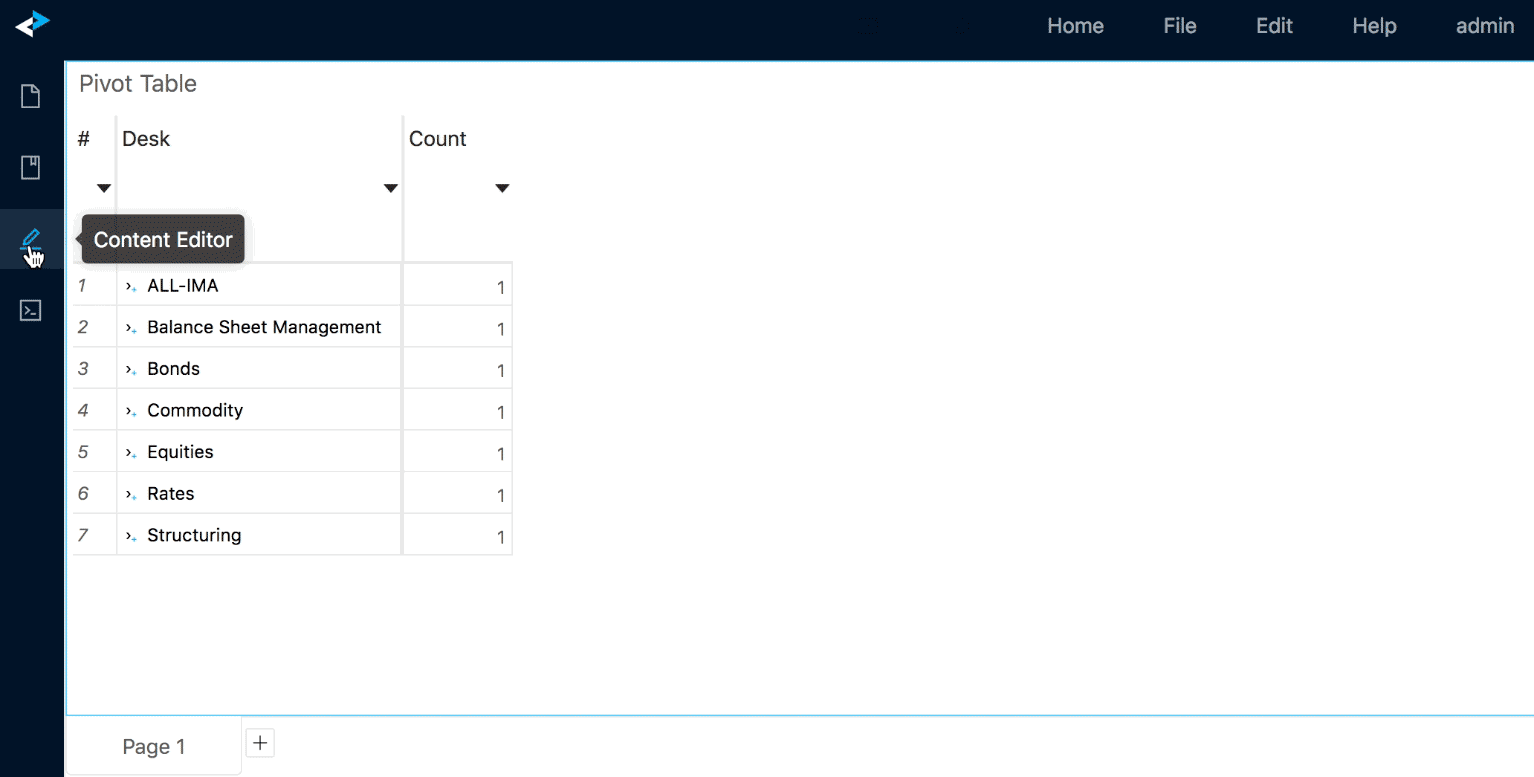Pivot Table
A Pivot Table displays aggregated data structured in a tree organized as logical hierarchies and levels. It allows you to expand and collapse level members to reveal their sub-totals and children.
Ask your product development team about setting up natural hierarchies for your daily use. Follow the link to read more about auto-expand.

Quick Start
Adding a New Pivot Table
The location of the "Pivot Table" widget depends on a particular implementation.
In many cases, the "Pivot Table" widget can be added from the empty dock or widgets library.
In the following example, the first pivot table is added form the empty dock, the second from the "Widgets" menu. If there are multiple cubes connected to your application, you must select the cube you need for the table.

To reuse an existing Pivot Table, drag it from the Bookmarks Tree.
Data editing
You can use the Content Editor widget to configure the data selection in your Pivot Table. Please refer to the Content Editor page for more information.

It is also possible to achieve specific requirements, such as:
- to change captions of measures
- to rename aggregation levels
- to apply complex conditional formatting
- or to apply virtually any kind of transformation to the data
You can view and further edit the query behind the Pivot Table using the Mdx Editor.
Saving a Pivot Table
You can save the widget using "Save as" action available for Widgets. When you save a widget, you can access it again from the Bookmarks Tree widget.
Changing the layout
The "Pivot Table" widget supports general Table Layout Controls, such as changing column headers or captions.
In addition, the "Pivot Table" supports different layouts described below that can be accessed using the "Display as…" contextual action.

Display as Tree
This is the default layout of the Pivot Table where a single column is used to hold all the levels expressed on the rows with the indentation of the labels representing the depth of each level.
Display as Pivot
This layout is similar to the Tree layout except that it uses a separate column for each level.
Display as Table
Use the "Display as Table" context menu to change the display of the aggregation levels on the rows to tabular view. Note that Subtotals - see level members (All) - remains on the screen: this is a key difference with Tabular View.
If you need to hide intermediate levels in a multi-level hierarchy: switch to Display as Columns, click on column header and select "Remove", then switch back to Tree view, see "Display as Tree" below. Currently, showing hidden columns in a pivot table is only possible using the State Editor.
Hide and Show Content Editor
Depending on a particular implementation, the Content Editor may be displayed attached to the Pivot Table. Use the widget's action to show/hide the Content Editor if available.
Display KPI status
To display a KPI Status, drag it directly into the table:

Differences with a Tabular View
Differences between a Pivot Table and a Tabular View are summarized in this comparison table
